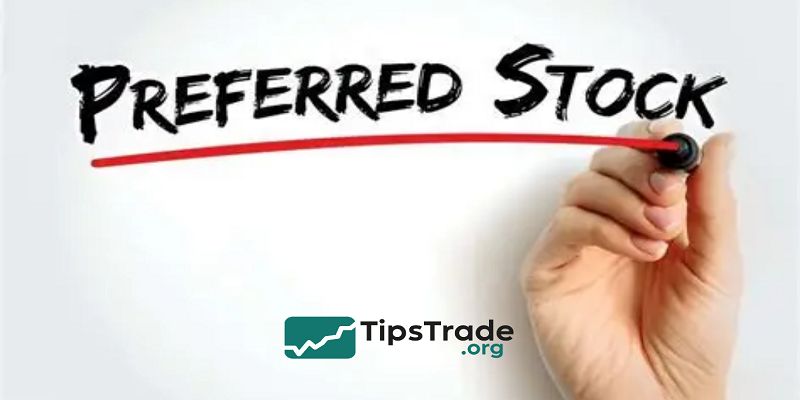Preferred stock is a unique type of equity that combines the best of both worlds — the consistent income of bonds and the growth potential of common stocks. It offers investors priority on dividends and liquidation proceeds, but usually comes with limited voting rights. This hybrid nature makes preferred shares a popular choice among income-seeking investors, retirees, and institutions aiming for predictable cash flows.
What Is Preferred Stock?

- Preferred stock (or preferred shares) represents a class of ownership in a company that has a higher claim on assets and earnings than common stock.
- Typically, preferred shareholders receive dividends before common shareholders and have priority in the event of bankruptcy.
- However, they often do not possess voting rights in corporate decisions.
- Preferred stock is sometimes viewed as a bridge between equity and fixed income.
- Like bonds, it pays fixed dividends, but unlike bonds, its value can rise with the company’s performance.
- This balance of stability and potential growth makes preferred stock appealing to conservative investors who still want some exposure to equity markets.
- For instance, major financial institutions such as Bank of America and Goldman Sachs regularly issue preferred shares to raise capital without diluting voting control.
- According to data from Morningstar, preferred stocks represent about 10–15% of many diversified income funds.
>>See more:
- Stock Issuance: A Detailed A-to-Z Guide for Investors
- What are stock exchanges and how do they work?
- Understanding Dividend stocks and how to invest in them
- What Is Stock Valuation? Notes When Valuation Of Stocks
Key Characteristics of Preferred Stock

Preferred shares stand out because of their hybrid structure. Here are the defining traits:
- Fixed or variable dividends: Most preferred stocks pay a fixed dividend rate, similar to bond coupons. Some modern issues have floating rates tied to benchmarks like LIBOR or SOFR.
- Priority in dividends and liquidation: Preferred holders get paid before common shareholders in both dividends and liquidation events.
- Limited or no voting rights: Investors trade influence for stability.
- Callable or redeemable: The issuing company can repurchase shares after a set date, often at a slight premium.
- Convertible options: Some preferred stocks can be converted into common shares, offering upside potential.
Example: A “5% callable preferred share” at $25 par value would yield $1.25 in annual dividends. If interest rates drop, the issuer might call the shares to refinance at a lower rate — similar to how homeowners refinance a mortgage.
Benefits of Investing in Preferred Stock

Preferred stock appeals to investors looking for a steady income stream with moderate risk exposure.
Reliable Income Stream
- Preferred shares typically pay fixed dividends, making them attractive for retirees or income-focused investors.
- According to Fidelity Investments, average yields on preferred stocks often range between 5%–7%, higher than most common stocks and comparable to corporate bonds.
Priority over Common Shares
- In case of company liquidation, preferred shareholders are paid before common shareholders, although after bondholders.
- This extra layer of safety adds a cushion against total loss.
Tax Advantages
- In the U.S., some preferred dividends qualify for lower tax rates under the “qualified dividend” rule, depending on holding period and issuer type.
- IRS Publication 550 provides the official criteria.
Hybrid Flexibility
- Preferred stocks combine the income stability of bonds and the potential appreciation of stocks.
- Convertible preferred shares even allow holders to switch into common shares if the company performs well.
Diversification Tool
- Since preferreds often behave differently from both stocks and bonds, they can lower overall portfolio volatility.
Risks and Drawbacks of Preferred Stock
Despite their advantages, preferred shares are not risk-free. Investors should weigh these factors:
- Interest Rate Sensitivity: When interest rates rise, fixed-income securities like preferreds tend to fall in price.
- For example, during the 2022 rate hikes, the ICE BofA Preferred Stock Index dropped over 15%.
- Call Risk: Issuers may redeem shares when rates fall, cutting short your expected income stream.
- Credit Risk: If the issuing company faces financial trouble, dividends may be deferred or canceled.
- Liquidity Issues: Some preferred shares trade infrequently, leading to wider bid-ask spreads.
- No Voting Rights: Investors have limited say in corporate governance decisions.
Expert Insight: According to Morningstar Research (2023), investors who hold preferreds in high-rate environments must be ready for price volatility, though dividend income remains relatively stable.
Types of Preferred Stock
Preferred stocks come in several forms, each with distinct rights and obligations:
| Type | Description | Example |
| Cumulative | Unpaid dividends accumulate and must be paid before common shareholders receive any. | Most bank preferreds |
| Non-cumulative | Missed dividends are not owed later. | Some utility or tech preferreds |
| Participating | May receive extra dividends if the company performs exceptionally well. | Startups or VC-backed firms |
| Convertible | Can be exchanged for common shares at a set ratio. | Tesla’s early financing rounds |
| Callable/Redeemable | Company can repurchase at a preset price. | Typical in financial institutions |
Preferred Stock in Different Contexts
Publicly Traded Companies
- Large corporations issue preferred stock to raise capital while maintaining control. For instance, J.P. Morgan Chase offers multiple preferred series, each with different dividend structures.
- Investors can buy these through major exchanges, just like common stock.
- Preferreds from utilities, banks, and insurance companies are especially common because these sectors seek stable funding and predictable dividends.
Startups and Venture Capital
- In private markets, preferred stock takes on a different role.
- Venture capitalists often demand preferred shares to secure downside protection.
- Terms like “liquidation preference”, “anti-dilution”, and “participation rights” are key clauses in startup term sheets.
Example: A VC investing $5 million in a startup might receive Series A Preferred Shares with a 1x liquidation preference — meaning they get their $5 million back before common shareholders see any proceeds.
Preferred Stock Funds and ETFs
- Investors who prefer diversification can consider funds like the iShares Preferred & Income Securities ETF (PFF) or Invesco Preferred ETF (PGX).
- These funds hold baskets of preferreds across sectors, reducing single-issuer risk.
How to Evaluate Preferred Stock Investments

Evaluating preferred stock investments involves careful consideration of several key factors that affect risk, return, and potential price stability.
Dividend Yield and Coverage
- Dividend yield is a primary metric, but it must be supported by earnings. Check the payout ratio—the proportion of earnings used to pay dividends.
- A payout ratio above 80% may signal pressure on the company’s ability to sustain dividend payments, which is a risk factor for preferred shareholders.
Credit Ratings
- Preferred stocks are often rated by major agencies like Moody’s and S&P Global.
- A rating below BBB- is considered below investment grade, indicating higher credit risk.
- Investors should seek preferred stocks from companies with stable issuers and strong credit metrics to reduce default risk.
- The rating reflects how well dividends and debt obligations are covered by earnings.
Call Date and Terms
- Many preferred stocks have call provisions allowing the issuer to redeem shares after a specific date at a predetermined price.
- Understanding these terms is important because callable preferreds might be redeemed early, often when interest rates decline, potentially limiting upside for investors.
- Diversifying call dates or laddering can mitigate reinvestment risk.
Convertibility
- Convertible preferred stocks can convert into common shares, offering potential upside if the common stock appreciates.
- Evaluating the conversion ratio and trigger price helps investors understand the conversion value and potential gains beyond fixed dividends.
- This feature adds a layer of equity optionality.
Interest Rate Outlook
- Preferred stocks behave somewhat like bonds—they generally decline in value when interest rates rise.
- To limit losses in a rising rate environment, investors might prefer floating-rate or short-duration preferreds, which adjust payouts or have shorter expected periods before maturities or calls.
Pro Tip: Laddering Preferred Stocks
- Some analysts recommend laddering preferred stocks by holding issues with varied call dates and yields.
- This strategy aims to smooth out reinvestment risk by staggering the time when investments might be called or mature, allowing more consistent income streams over time.
Preferred Stock vs Common Stock vs Bonds
| Feature | Preferred Stock | Common Stock | Bonds |
| Ownership | Partial equity | Full equity | Debt obligation |
| Dividends/Interest | Fixed or adjustable | Variable (optional) | Fixed interest |
| Voting Rights | Usually none | Yes | None |
| Priority in Liquidation | Before common, after bonds | Last | First |
| Risk Level | Moderate | High | Low–moderate |
| Upside Potential | Limited (unless convertible) | High | None |
In short, preferred stock sits between bonds and common equity — a balanced choice for those seeking income with modest risk.
Real-World Example
- Imagine BlueBank Corp. issues preferred shares at $25 per share with a 6% annual dividend. Each share pays $1.50 per year.
- If market interest rates rise to 8%, investors may demand a higher yield, pushing the market price of the preferreds down to around $19. Conversely, if rates fall to 4%, the price may rise above par.
- Such price movements illustrate how interest rate sensitivity affects preferred stock values. Yet, as long as BlueBank continues paying dividends, income-focused investors can still enjoy predictable cash flow.
Should You Invest in Preferred Stock?
Preferred stock suits investors who:
- Seek steady dividend income
- Can tolerate interest rate risk
- Don’t require voting control
- Want to diversify away from common equities
However, if your goal is high growth, preferreds may underperform common stocks in bull markets. The key is to balance them within a broader income-oriented strategy.
Conclusion
Preferred stock bridges the gap between equity and debt — offering higher yields than common stock with more stability than corporate bonds. For many income investors, especially retirees or portfolio managers seeking dependable cash flow, it’s an essential component of a diversified portfolio. Still, success in preferred investing depends on understanding the issuer’s credit quality, interest rate outlook, and specific share terms. As always, do your homework or consult a financial advisor before adding preferreds to your mix. The article above from Tipstrade.org has just provided you . We hope that you find it useful. Wishing you successful trading!
>> See more:

